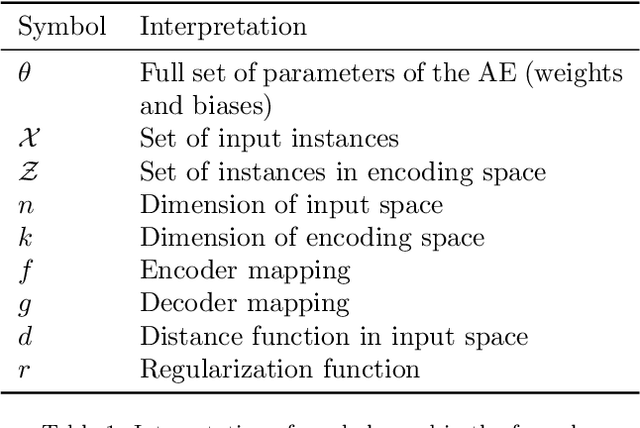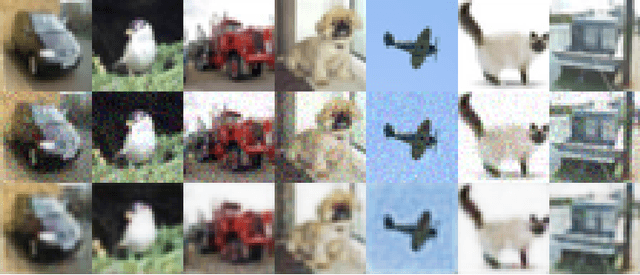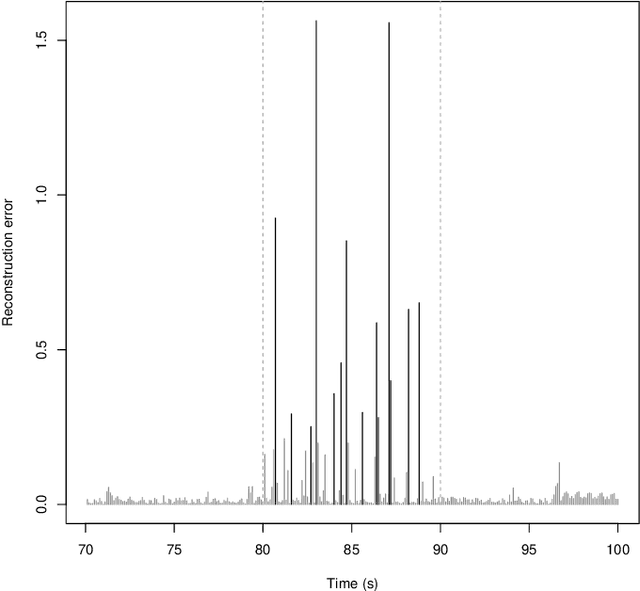María J. del Jesus
mldr.resampling: Efficient Reference Implementations of Multilabel Resampling Algorithms
May 30, 2023Abstract:Resampling algorithms are a useful approach to deal with imbalanced learning in multilabel scenarios. These methods have to deal with singularities in the multilabel data, such as the occurrence of frequent and infrequent labels in the same instance. Implementations of these methods are sometimes limited to the pseudocode provided by their authors in a paper. This Original Software Publication presents mldr.resampling, a software package that provides reference implementations for eleven multilabel resampling methods, with an emphasis on efficiency since these algorithms are usually time-consuming.
EvoAAA: An evolutionary methodology for automated eural autoencoder architecture search
Jan 15, 2023Abstract:Machine learning models work better when curated features are provided to them. Feature engineering methods have been usually used as a preprocessing step to obtain or build a proper feature set. In late years, autoencoders (a specific type of symmetrical neural network) have been widely used to perform representation learning, proving their competitiveness against classical feature engineering algorithms. The main obstacle in the use of autoencoders is finding a good architecture, a process that most experts confront manually. An automated autoencoder architecture search procedure, based on evolutionary methods, is proposed in this paper. The methodology is tested against nine heterogeneous data sets. The obtained results show the ability of this approach to find better architectures, able to concentrate most of the useful information in a minimized coding, in a reduced time.
An analysis on the use of autoencoders for representation learning: fundamentals, learning task case studies, explainability and challenges
May 21, 2020



Abstract:In many machine learning tasks, learning a good representation of the data can be the key to building a well-performant solution. This is because most learning algorithms operate with the features in order to find models for the data. For instance, classification performance can improve if the data is mapped to a space where classes are easily separated, and regression can be facilitated by finding a manifold of data in the feature space. As a general rule, features are transformed by means of statistical methods such as principal component analysis, or manifold learning techniques such as Isomap or locally linear embedding. From a plethora of representation learning methods, one of the most versatile tools is the autoencoder. In this paper we aim to demonstrate how to influence its learned representations to achieve the desired learning behavior. To this end, we present a series of learning tasks: data embedding for visualization, image denoising, semantic hashing, detection of abnormal behaviors and instance generation. We model them from the representation learning perspective, following the state of the art methodologies in each field. A solution is proposed for each task employing autoencoders as the only learning method. The theoretical developments are put into practice using a selection of datasets for the different problems and implementing each solution, followed by a discussion of the results in each case study and a brief explanation of other six learning applications. We also explore the current challenges and approaches to explainability in the context of autoencoders. All of this helps conclude that, thanks to alterations in their structure as well as their objective function, autoencoders may be the core of a possible solution to many problems which can be modeled as a transformation of the feature space.
A Showcase of the Use of Autoencoders in Feature Learning Applications
May 08, 2020



Abstract:Autoencoders are techniques for data representation learning based on artificial neural networks. Differently to other feature learning methods which may be focused on finding specific transformations of the feature space, they can be adapted to fulfill many purposes, such as data visualization, denoising, anomaly detection and semantic hashing. This work presents these applications and provides details on how autoencoders can perform them, including code samples making use of an R package with an easy-to-use interface for autoencoder design and training, \texttt{ruta}. Along the way, the explanations on how each learning task has been achieved are provided with the aim to help the reader design their own autoencoders for these or other objectives.
* This manuscript was accepted as conference paper in IWINAC 2019. The final authenticated publication is available online at https://doi.org/10.1007/978-3-030-19651-6_40
AEkNN: An AutoEncoder kNN-based classifier with built-in dimensionality reduction
Mar 09, 2018



Abstract:High dimensionality, i.e. data having a large number of variables, tends to be a challenge for most machine learning tasks, including classification. A classifier usually builds a model representing how a set of inputs explain the outputs. The larger is the set of inputs and/or outputs, the more complex would be that model. There is a family of classification algorithms, known as lazy learning methods, which does not build a model. One of the best known members of this family is the kNN algorithm. Its strategy relies on searching a set of nearest neighbors, using the input variables as position vectors and computing distances among them. These distances loss significance in high-dimensional spaces. Therefore kNN, as many other classifiers, tends to worse its performance as the number of input variables grows. In this work AEkNN, a new kNN-based algorithm with built-in dimensionality reduction, is presented. Aiming to obtain a new representation of the data, having a lower dimensionality but with more informational features, AEkNN internally uses autoencoders. From this new feature vectors the computed distances should be more significant, thus providing a way to choose better neighbors. A experimental evaluation of the new proposal is conducted, analyzing several configurations and comparing them against the classical kNN algorithm. The obtained conclusions demonstrate that AEkNN offers better results in predictive and runtime performance.
Dealing with Difficult Minority Labels in Imbalanced Mutilabel Data Sets
Feb 14, 2018



Abstract:Multilabel classification is an emergent data mining task with a broad range of real world applications. Learning from imbalanced multilabel data is being deeply studied latterly, and several resampling methods have been proposed in the literature. The unequal label distribution in most multilabel datasets, with disparate imbalance levels, could be a handicap while learning new classifiers. In addition, this characteristic challenges many of the existent preprocessing algorithms. Furthermore, the concurrence between imbalanced labels can make harder the learning from certain labels. These are what we call \textit{difficult} labels. In this work, the problem of difficult labels is deeply analyzed, its influence in multilabel classifiers is studied, and a novel way to solve this problem is proposed. Specific metrics to assess this trait in multilabel datasets, called \textit{SCUMBLE} (\textit{Score of ConcUrrence among iMBalanced LabEls}) and \textit{SCUMBLELbl}, are presented along with REMEDIAL (\textit{REsampling MultilabEl datasets by Decoupling highly ImbAlanced Labels}), a new algorithm aimed to relax label concurrence. How to deal with this problem using the R mldr package is also outlined.
Tackling Multilabel Imbalance through Label Decoupling and Data Resampling Hybridization
Feb 14, 2018



Abstract:The learning from imbalanced data is a deeply studied problem in standard classification and, in recent times, also in multilabel classification. A handful of multilabel resampling methods have been proposed in late years, aiming to balance the labels distribution. However these methods have to face a new obstacle, specific for multilabel data, as is the joint appearance of minority and majority labels in the same data patterns. We proposed recently a new algorithm designed to decouple imbalanced labels concurring in the same instance, called REMEDIAL (\textit{REsampling MultilabEl datasets by Decoupling highly ImbAlanced Labels}). The goal of this work is to propose a procedure to hybridize this method with some of the best resampling algorithms available in the literature, including random oversampling, heuristic undersampling and synthetic sample generation techniques. These hybrid methods are then empirically analyzed, determining how their behavior is influenced by the label decoupling process. As a result, a noteworthy set of guidelines on the combined use of these techniques can be drawn from the conducted experimentation.
Tips, guidelines and tools for managing multi-label datasets: the mldr.datasets R package and the Cometa data repository
Feb 10, 2018



Abstract:New proposals in the field of multi-label learning algorithms have been growing in number steadily over the last few years. The experimentation associated with each of them always goes through the same phases: selection of datasets, partitioning, training, analysis of results and, finally, comparison with existing methods. This last step is often hampered since it involves using exactly the same datasets, partitioned in the same way and using the same validation strategy. In this paper we present a set of tools whose objective is to facilitate the management of multi-label datasets, aiming to standardize the experimentation procedure. The two main tools are an R package, mldr.datasets, and a web repository with datasets, Cometa. Together, these tools will simplify the collection of datasets, their partitioning, documentation and export to multiple formats, among other functions. Some tips, recommendations and guidelines for a good experimental analysis of multi-label methods are also presented.
A practical tutorial on autoencoders for nonlinear feature fusion: Taxonomy, models, software and guidelines
Jan 04, 2018
Abstract:Many of the existing machine learning algorithms, both supervised and unsupervised, depend on the quality of the input characteristics to generate a good model. The amount of these variables is also important, since performance tends to decline as the input dimensionality increases, hence the interest in using feature fusion techniques, able to produce feature sets that are more compact and higher level. A plethora of procedures to fuse original variables for producing new ones has been developed in the past decades. The most basic ones use linear combinations of the original variables, such as PCA (Principal Component Analysis) and LDA (Linear Discriminant Analysis), while others find manifold embeddings of lower dimensionality based on non-linear combinations, such as Isomap or LLE (Linear Locally Embedding) techniques. More recently, autoencoders (AEs) have emerged as an alternative to manifold learning for conducting nonlinear feature fusion. Dozens of AE models have been proposed lately, each with its own specific traits. Although many of them can be used to generate reduced feature sets through the fusion of the original ones, there also AEs designed with other applications in mind. The goal of this paper is to provide the reader with a broad view of what an AE is, how they are used for feature fusion, a taxonomy gathering a broad range of models, and how they relate to other classical techniques. In addition, a set of didactic guidelines on how to choose the proper AE for a given task is supplied, together with a discussion of the software tools available. Finally, two case studies illustrate the usage of AEs with datasets of handwritten digits and breast cancer.
 Add to Chrome
Add to Chrome Add to Firefox
Add to Firefox Add to Edge
Add to Edge